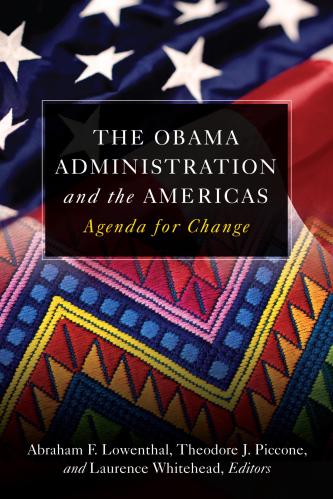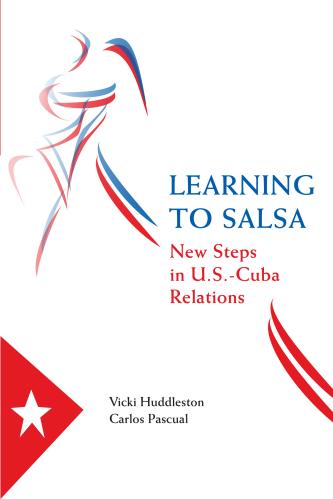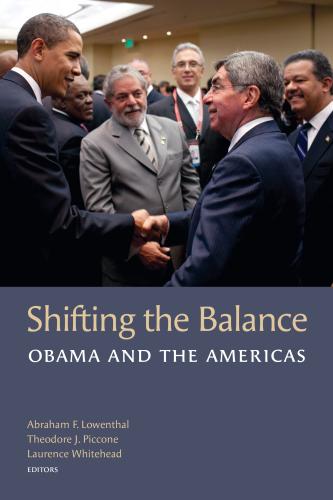The following post is part of a series of analyses on drug policy challenges facing Colombia, and how particular approaches may affect prospects for building a sustainable peace in the country. You can read Vanda Felbab Brown’s analysis here and analysis by Beau Kilmer and Greg Midgette here.
The drug trade prolonged Colombia’s armed conflict well past its “natural” lifespan, providing insurgent groups with the money and institutional deterioration they needed to survive. It’s not just a cause of violence, though: The drug trade itself is a symptom of the deeper conditions underlying Colombia’s long conflict, particularly state weakness and impunity. Better governance offers the most permanent way out of both, and the government-FARC peace accord offers ample evidence that both parties understand this.
If the Colombian government were to fulfill its commitments in the accord’s first chapter, on Comprehensive Rural Reform, the Colombian countryside would cease to be a hospitable place for coca growing. These commitments include a national mapping of landholdings and massive land titling; constructing tertiary roads and irrigation systems; and enhancing electrification, education, health, food security programs, and access to credit, among others. Much of these are public goods that you’d expect any government to provide for its citizens. Still, it will be expensive to put them all in place over the 15 years the accord foresees, especially in distant agricultural frontier zones settled by generations of displacement.
The peace accords’ fourth chapter zooms in on the drug economy, proclaiming an intent to “solve the problem of illicit drugs.” It commits the Colombian government to signing “integral crop substitution plan” agreements with communities of coca-growers around the country. These agreements vary by region, but a common framework right now calls for voluntary coca eradication in exchange for about $12,000 in assistance per coca-growing household over a two-year period, aimed at helping that household develop a “productive project”: an investment in a crop or product that offers promising market prospects. Those who comply are often promised titles to their informal landholdings if they have no coca after two years. Those who do not comply will be subject to forced eradication, which may be carried out with the participation of former FARC fighters.
The “illicit crops” part of the peace accord is more transactional than the “rural reform” part of the accord. Instead of addressing state weakness or absence, it says: “eradicate this much, and you’ll receive this benefit.” That its text has been public since 2014 has created a perverse incentive for farmers around the country to plant coca in order to qualify for cash benefits.
This perverse incentive is one reason why Colombia’s coca crop has exploded in size, growing by 140 percent since 2012. Others include a suspension of aerial herbicide fumigation without any other alternative strategy in place. (Some observers say that the suspension was a government concession to the FARC. This is false: The suspension came after a World Health Organization study pointed to a possible cancer risk. The peace accords explicitly hold out the possibility of future aerial spraying.) Rapid coca planting was also enabled by a stronger U.S. dollar, making farm-gate prices for coca leaf appear more generous in pesos; a decline in gold prices which encouraged people to turn from illicit mining to coca; and coca growers’ organized ability to resist manual eradication.
To deal with the spike in coca growing, Colombia’s government faces three models, each with its own constituency. They are:
- Fix the situation permanently with a long-term project to establish governance and rule of law in rural areas. This means bringing a state presence and providing public goods. This is the vision somewhat expressed in the peace accords’ first chapter. It is the prescription of government technocrats, scholars, non-governmental advocates, international development donors, and many civil-society organizations. But it is the most expensive option, and does not yield the short-term rapid results that politicians in Bogotá and Washington demand.
- Make partial, semi-permanent gains through a transactional, negotiated model of “crop substitution.” This is the vision of the peace accords’ fourth chapter. In some regions of the country, this strategy may achieve sustained reductions in coca cultivation. But “crop substitution” programs have end dates after which the government stops writing checks. After that, with no significant change in state presence and rule of law, many regions risk a return to coca cultivation.
- Achieve short-term but easily reversible gains with a get-tough strategy of forced eradication, possibly including aerial herbicide spraying. This is the solution that the U.S. government has backed for 30 years, and is today suggesting to Colombia in emphatic terms. It is also popular with politicians on Colombia’s right-wing opposition.
These three approaches aren’t mutually exclusive. In fact, the peace accords contemplate doing all three simultaneously, though they call for giving (1) and (2) far more emphasis than they’ve ever received before.
The government of President Juan Manuel Santos is only in office for one more year. It appears determined to spend that year focusing on (2) and (3)—minus fumigation, which will not restart while Santos is in office.
The Santos administration expects to eradicate 100,000 hectares of coca in 2017, up from 18,000 in 2016. (The U.S. government estimated that there were 188,000 hectares of coca planted in Colombia at the end of 2016.) 50,000 of the reduction would come from forced manual eradication campaigns, with teams of eradicators, police, or soldiers pulling the plants out of the ground, or spraying herbicides on them by hand, with no compensation for growers who are either planting in areas where they shouldn’t (national parks, indigenous reserves) or are planting what the government considers to be “industrial” plots. The government expects the remaining 50,000 hectares of coca eradication to result from voluntary substitution agreements signed with communities around the country, as foreseen by chapter four of the accords.
The government claims to have already signed agreements with coca-growing households covering at least 38,000 hectares. Still, the plan seems overly ambitious given the government’s demonstrated inability to fulfill in a timely way its past commitments to rural communities. Colombian analysts with past alternative development experience are especially skeptical. The idea of substituting 50,000 hectares of coca this year “is disproportionate and lacking a sense of reality,” says Daniel Rico, a widely cited Colombian expert who managed government illicit crop programs. “This has created enormous expectations in rural zones, and in the end the only result will be that for every family that signs up you’ll have six more who want the same benefits but can’t get them.”
[T]here is no money available to launch a Marshall Plan for rural Colombia.
The plan for the next year has little to say about approach (1), which appears to be on the shelf for now. Any real effort at (1), which would mean full implementation of the accords’ rural development chapter, will be left up to Santos’s successor: As of now, Colombia’s congress hasn’t even started debating the laws that must be in place to implement that first chapter’s many commitments. And at a time of tight resources—low oil prices and a weak peso have reduced Colombia’s state budget by a quarter in dollar terms since the FARC peace talks began—there is no money available to launch a Marshall Plan for rural Colombia. International donor support will be essential, but not sufficient to fill the gap.
For the time being, this most effective—but least politically palatable—approach will have to wait. This leaves the “hard side” favored by the United States and the less aggressive strategy foreseen by the peace accords’ fourth chapter.
If the Santos administration meets even half of its declared eradication goal in 2017, that should be enough to yield a reduction in Colombia’s coca cultivation statistic for this year. Though meaningless in the big picture, a lower coca number next year will give Bogotá some political breathing room against drug policy hard-liners. Still, unless Colombia’s next administration is serious about fulfilling the commitments in the accords’ rural development chapter, a continued overemphasis on eradication and “substitution” will yield the same failures we’ve witnessed for the past 30 years.
The Brookings Institution is committed to quality, independence, and impact.
We are supported by a diverse array of funders. In line with our values and policies, each Brookings publication represents the sole views of its author(s).








Commentary
Colombia’s peace accords point the way to a solution. But will they be implemented?
April 28, 2017